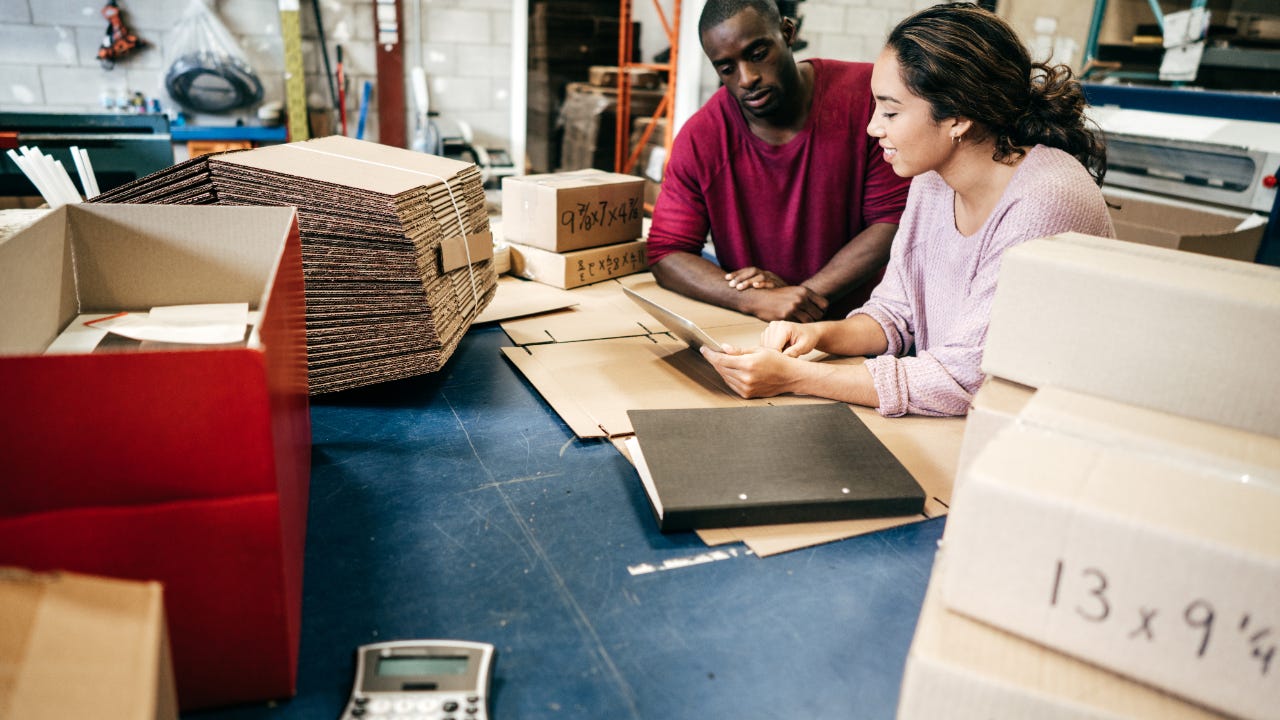SBA 7(a) loan: What it is and how to apply

The Bankrate promise
At Bankrate we strive to help you make smarter financial decisions. While we adhere to strict , this post may contain references to products from our partners. Here's an explanation for .
Key takeaways
- SBA 7(a) loans are the most common type of loan issued by the Small Business Administration
- You can get several types of SBA 7(a) loans, depending on your needs, including a 7(a) Small, Express, Export Express or CAPlines loan
- You can use a 7(a) loan for a variety of purposes, including working capital, buying equipment or real estate or refinancing debt
SBA loans are small business loans provided by private lenders and backed by the U.S. Small Business Administration. These loans guarantee that the government will pay back a portion of the loan if you can’t repay it.
Because of SBA loans’ competitive interest rates and repayment terms, many small businesses vie for these loans. As of March 2024, the SBA has approved over 30,500 SBA loans worth more than $12.96 billion, according to the SBA weekly lending report.
The most common loan the Small Business Administration grants is the 7(a) loan. You can apply for several types of 7(a) loans that match your business’s funding needs. Compare the different 7(a) loans, interest rates and fees and eligibility requirements to find which SBA 7(a) loan suits you best.
What is an SBA 7(a) loan?
An SBA 7(a) loan is a small business loan issued as part of the Small Business Administration’s 7(a) Loan Program. It offers seven loan options that you can apply for based on your business’s purpose for funding. For example, you might go for the Export Express loan if you’re looking to start an exporting business. Or you might choose the Builders CAPLine if you’re financing a construction project.
The 7(a) Loan Program is the most common SBA loan available since it can be used for a number of different purposes. It offers a maximum lending amount of $5 million. SBA 7(a) loans can be used for short- and long-term working capital, refinancing existing business debts, purchasing new machinery and equipment, acquiring supplies or other purposes to improve business operations.
Types of SBA loans
| Loan type | Maximum loan amount | Maximum guarantee | SBA turnaround time | Purpose |
|---|---|---|---|---|
| 7(a) loan | $5 million | 75% | 5 to 10 business days | Working capital, equipment, supplies purchases, real estate, business expansion |
| 7(a) small loan | $500,000 | 85% for loans $150,000 or less, 75% for $150,000 or more | 2 to 10 business days | Small projects and financial needs |
| Express loan | $500,000 | 50% | None; varies by lender | Expedited funding |
| Export Express loan | $500,000 | 90% for loans of $350,000 or less, 75% for loans over $350,000. | None; varies by lender | Expedited funding for export development |
| Export Working Capital loan | $5 million | 90% | Varies by lender | Working capital for export sales |
| International Trade loan | $5 million | 90% | 5 to 10 business days | Long-term funding for export sales to compete with foreign competitors |
| CAPLines | $5 million | 85% for loans of $150,000 or less, 75% for loans over $150,000 | Not stated | Short-term and seasonal needs |
SBA 7(a) loan terms
The standard SBA 7(a) loans guarantee up to 75 percent of the loan amount. The lender may also require collateral to guarantee the rest of the loan, using your business’s current assets or the assets being purchased or improved by the loan.
The loan is considered fully secured when the assets used equal the amount borrowed. Lenders and borrowers are free to negotiate loan terms and interest rates, but the lender cannot exceed the maximum interest rate set by the SBA.
For other SBA 7(a) loans like the SBA 7(a) Small loan or Express loan, you may not need collateral for loans of $50,000 or less. Loans above $50,000 typically will use the lender’s existing collateral policies to determine how much collateral you need.
SBA 7(a) loans must be used for one or more of these purposes:
- Real estate
- Working capital
- Refinancing current debt
- Buying equipment, furniture or supplies
- Change in ownership
SBA 7(a) loan requirements
SBA 7(a) loans come with a catch: you must meet the SBA’s strict set of requirements to be eligible for the 7(a) loan with all of its favorable rates and terms.
According to the SBA, businesses that apply for SBA 7(a) loans must meet the following criteria:
- Operate for profit
- Meet the SBA definition of a small business
- Do business in the United States or its territories
- Demonstrate a need for a loan
- Demonstrate that the funds will support a sound business
- Up to date on any existing U.S. government debt obligations
- Be creditworthy and reasonably able to repay the loan
- Must attempt to get conventional business loans and financing before applying
SBA lenders also set their own criteria for minimum time in business, credit score and annual revenue. These requirements tend to be strict, such as requiring two years in business. Lenders typically require strong personal credit, like 670 or above, though some lenders may accept fair credit, such as a personal credit score of 630.
SBA 7(a) loan rates
SBA lenders will offer an interest rate based on your creditworthiness and financial profile. But lenders cannot exceed these maximum interest rates set by the SBA.
Fixed-rate loans
| Loan amount | Maximum interest rate |
|---|---|
| $25,000 or less | 16.50% |
| $25,001 to $50,000 | 15.50% |
| $50,001 to $250,000 | 14.50% |
| Over $250,000 | 13.50% |
SBA loan rates are current as of March 2024, calculated with the current prime rate of 8.50%.
Variable-rate loans
| Loan amount | Maximum interest rate |
|---|---|
| $50,000 or less | 15.00% |
| $50,001 to $250,000 | 14.50% |
| $250,001 to $350,000 | 13.00% |
| Over $350,000 | 11.50% |
SBA loan rates are current as of March 2024, calculated with the current prime rate of 8.50%.
SBA (7a) loan fees
When getting an SBA 7(a) loan, you’ll need to pay a fee for receiving the SBA guarantee for the loan, called a guarantee fee. For fiscal year 2024, the guarantee fees are:
Loans with 12-month terms or less
| Loan amount | Guarantee fee |
|---|---|
| $1 million or less | 0.00% |
| Over $1 million | 0.25% of guaranteed portion of the loan |
Loans with terms over 12 months
| Loan amount | Guarantee fee |
|---|---|
| $1 million or less | 0.00% |
| $1,000,001 to $2 million | 1.45% of the guaranteed portion of the loan up to $1 million, plus 1.70% for amounts over $1 million |
| Over $2 million | 3.50% of the guaranteed portion of the loan up to $1 million, plus 3.75% for amounts over $1 million |
As an exception, Express loans given to veterans and their spouses won’t be charged a guarantee fee.
How to apply for an SBA 7(a) loan
To apply for an SBA 7(a) loan, you will need to work with a lender approved by the SBA. Then, be prepared to submit a long list of financial documentation to show that you can repay the loan. You’ll go through multiple steps to apply for the loan, including:
1. Find a lender
Many financial institutions offer SBA 7(a) loans, though you’ll usually find them with traditional banks and credit unions. The SBA offers an online tool that helps match businesses with lenders. Finding the right lender can help you apply and, ultimately, give you the best odds of getting approved for a loan.
Some lenders also participate in the SBA Preferred Lender Program, which certifies that the lender can process SBA loans efficiently. Preferred lenders may be able to bypass getting direct SBA approval for some loans, significantly speeding up the loan approval process. Lenders in the Preferred Lending program include Chase, Bank of America and Huntington National Bank.
2. Submit an application
Once you have selected your lender, you will need to gather the necessary documents and fill out the proper 7(a) loan application to be considered for approval.
There are several documents that you may be required to submit in order to be approved for an SBA 7(a) loan. While your lender will help you submit the proper forms, you may need the following:
- SBA Form 1920
- SBA Form 1919 (Borrower Information Form) SBA Forms 912 and 413 (Personal background and financial statement)
- Business financial statements, like balance sheets and profit and loss statements
- Projected financial statements
- Business certificate or license
- Prior loan applications
- Income tax returns
- Information on each business owner
- Business overview and history
- Business lease
3. Await approval
Once you submit your SBA 7(a) loan application, you will have to wait for the SBA to review it and make a decision.
SBA Preferred Lenders may approve loans faster than non-preferred lenders. The SBA states that the turnaround time for its portion of the approval is five to 10 business days, but any missing documentation, application errors or other lender requirements could delay the process. You should be willing to wait anywhere from 30 to 90 days since this is the average processing time for SBA loans.
Alternatives to SBA 7(a) loans
If you don’t qualify or you were denied an SBA loan, you might need to consider these financing alternatives:
- SBA microloans: SBA microloans offer small amounts of funding up to $50,000. They’re offered through nonprofit or community SBA microlenders that often aim to serve disadvantaged communities. They tend to have lenient requirements to apply, such as having low or no credit requirements.
- Online lenders: Online lenders offer faster funding than traditional lenders and the SBA. Loan amounts vary, but online lenders typically have less strict requirements. For example, they may accept startups or borrowers with personal credit scores of 600 or less.
- Business credit cards: Business credit cards may be easier to qualify for than SBA loans, though credit limits may be lower than SBA loan amounts. Credit card companies typically don’t require much documentation to apply. Many credit cards have rewards like cash back or points that you can redeem for travel or other purchases. You can also avoid accruing interest if you pay the balance in full each month.
- Business lines of credit: A business line of credit offers a credit limit — or maximum borrowing amount — that you can borrow against whenever you need it. The credit limit replenishes as you repay the loan, allowing you to reuse it. Plus, you only pay interest on the amounts you borrow.
- Equipment loans: Equipment loans offer a lump-sum payment with set repayment terms backed by the equipment as collateral. Many lenders set lenient requirements for these loans since they’re secured by the equipment.
- Grants: Business grants are an ideal way to finance your business since they don’t require you to repay the funds. You can even find grants geared toward specific groups, such as minorities. But you have to meet the requirements for the grant and compete with the many other businesses applying for it.
- Bad credit business loans: Some lenders offer bad credit business loans for borrowers with poor credit, such as a score of 550 or 625. Also, certain loans like merchant cash advances cater to high-risk borrowers with high approval rates but with added fees.
- Crowdfunding: Crowdfunding offers a way to raise funds from individuals willing to invest in your business. With some crowdfunding platforms like Kiva, the funds act as a business loan that you will repay with or without interest.
Bottom line
The SBA 7(a) loan program is the U.S. Small Business Administration’s most popular SBA loan because it offers several loans that can be used for a variety of purposes. The SBA also sets maximum interest rates and offers long repayment terms, making 7(a) loans highly attractive to small businesses. But you will need to meet the strict requirements set by both the SBA and the lender in order to be eligible.
Frequently asked questions
-
Every lender sets its own requirements to qualify for an SBA 7(a) loan, but they tend to have strict requirements. The lender must ensure that the business owner is in good financial standing and that the business does not have any outstanding debt from other government-issued loans.
-
Yes, standard SBA 7(a) loans may require collateral for any loan amount. However, you can get an SBA 7(a) Small or Express loan without collateral for loans of $50,000 or less. However, businesses seeking SBA 7(a) loans for greater than $50,000 will have to provide collateral.
-
The documents needed for an SBA loan 7(a) will vary depending on the lender. In general, it’s a good idea to submit a business plan along with your SBA forms and business financial statements. The business plan outlines your business’s growth strategy and how you plan to use the financing.
Related Articles



